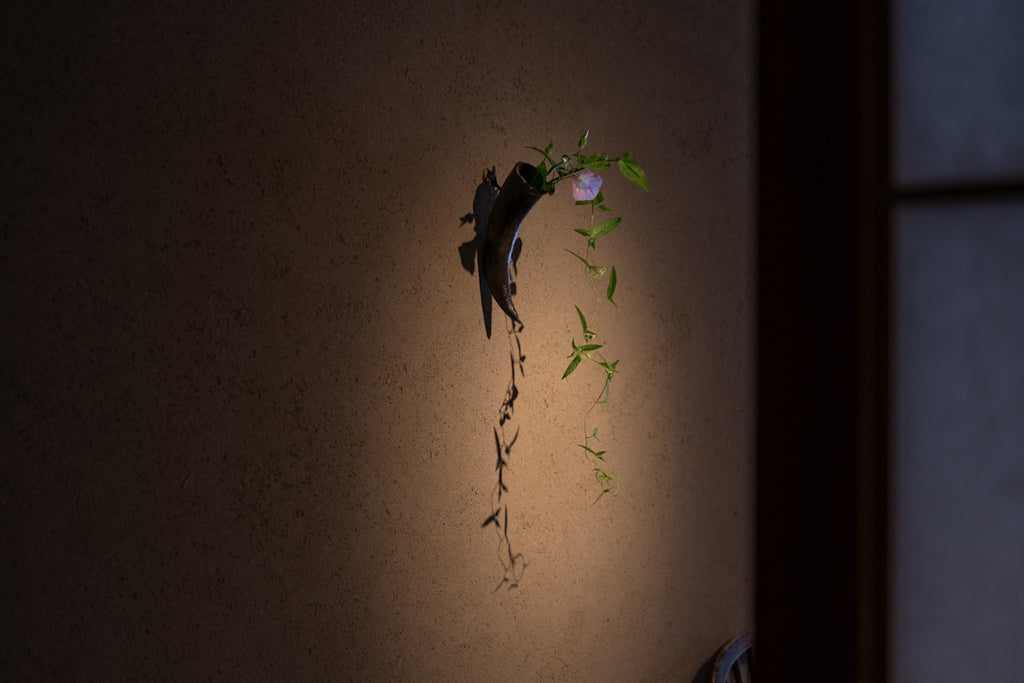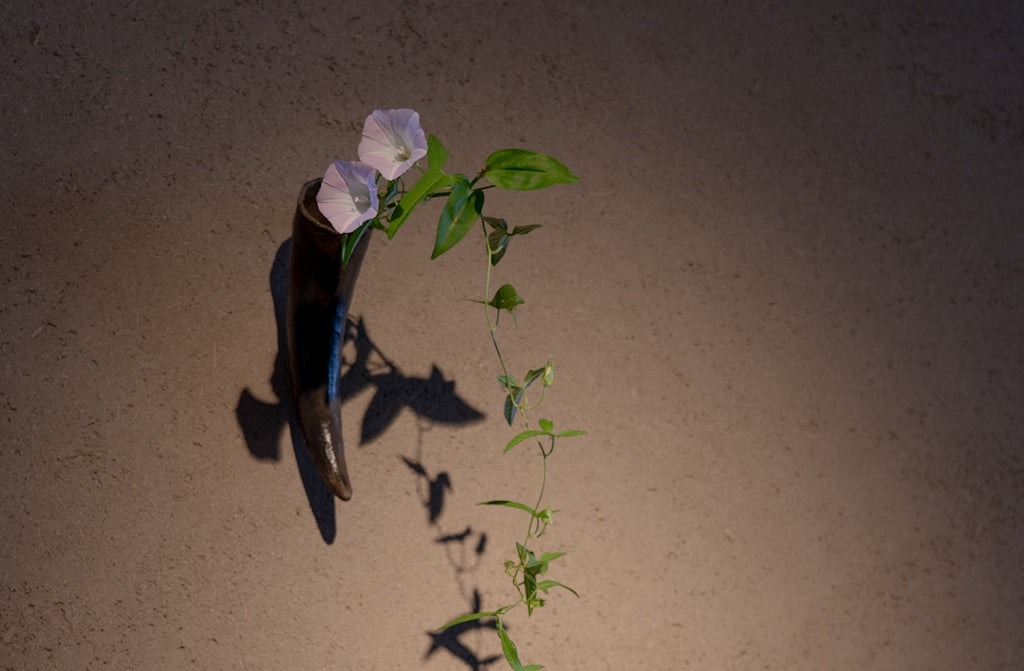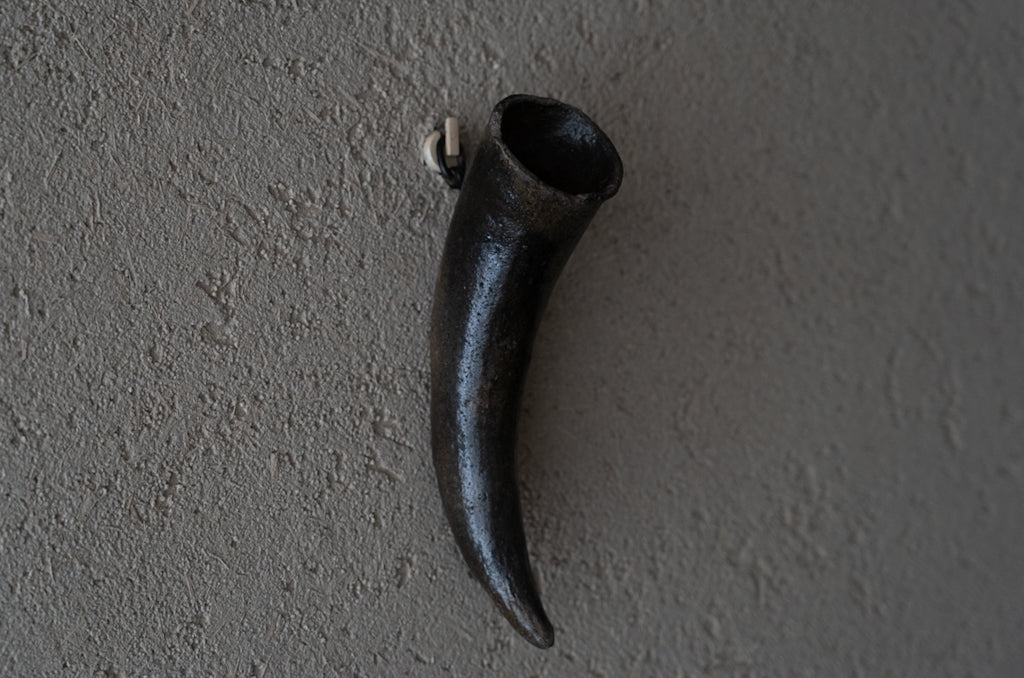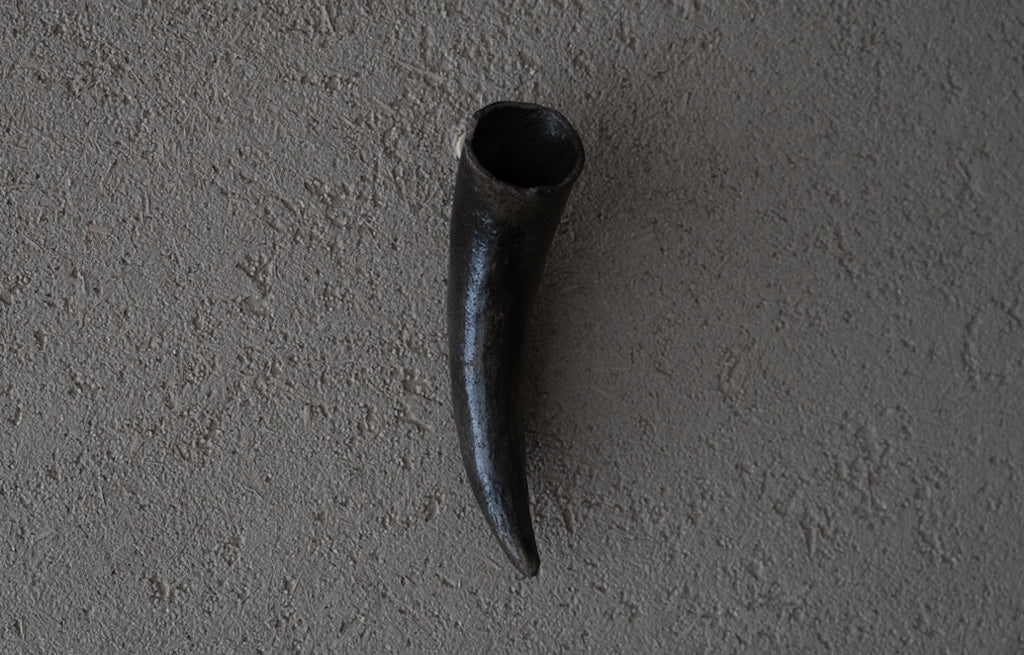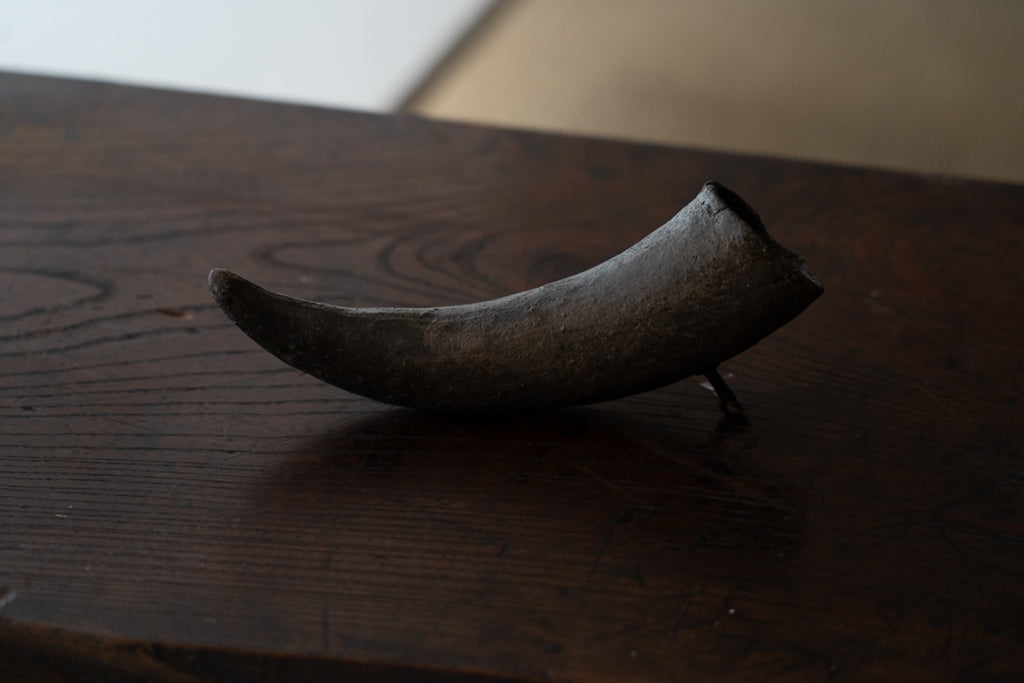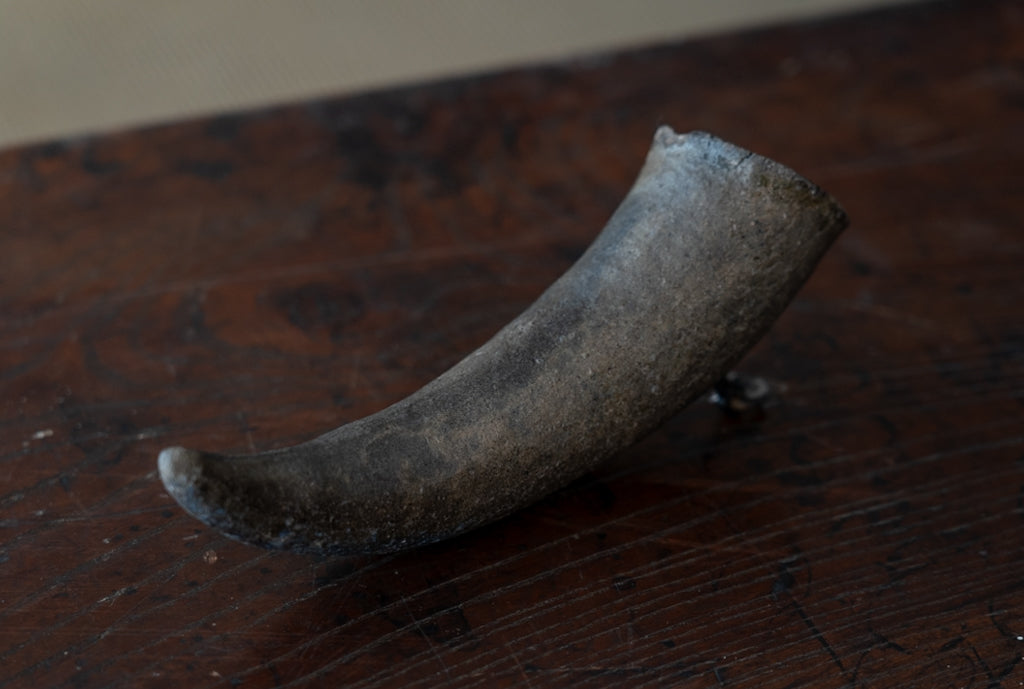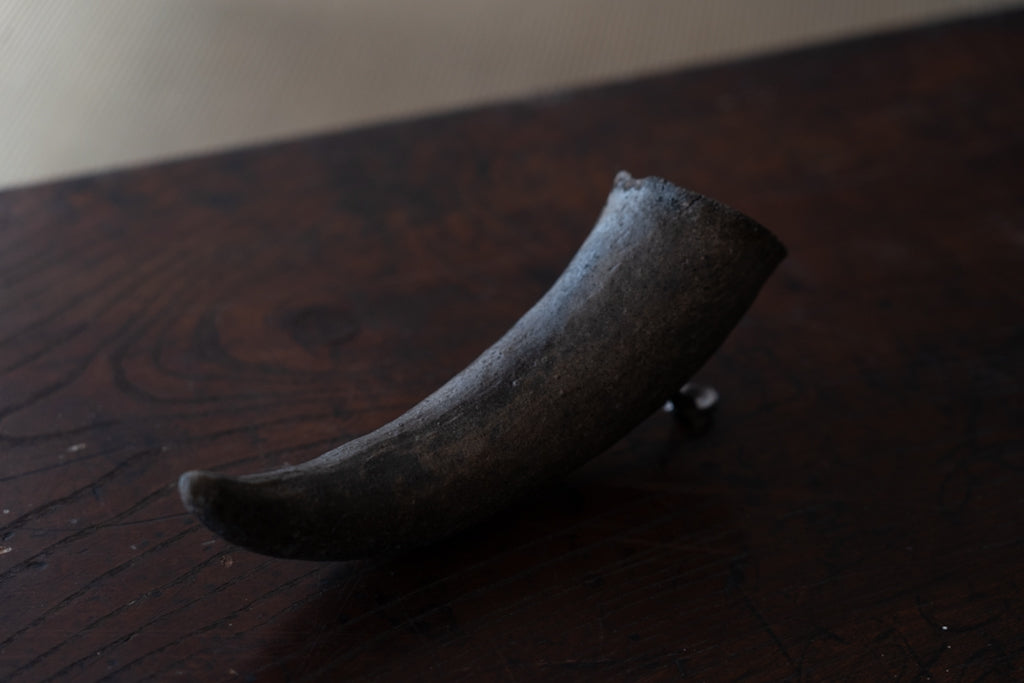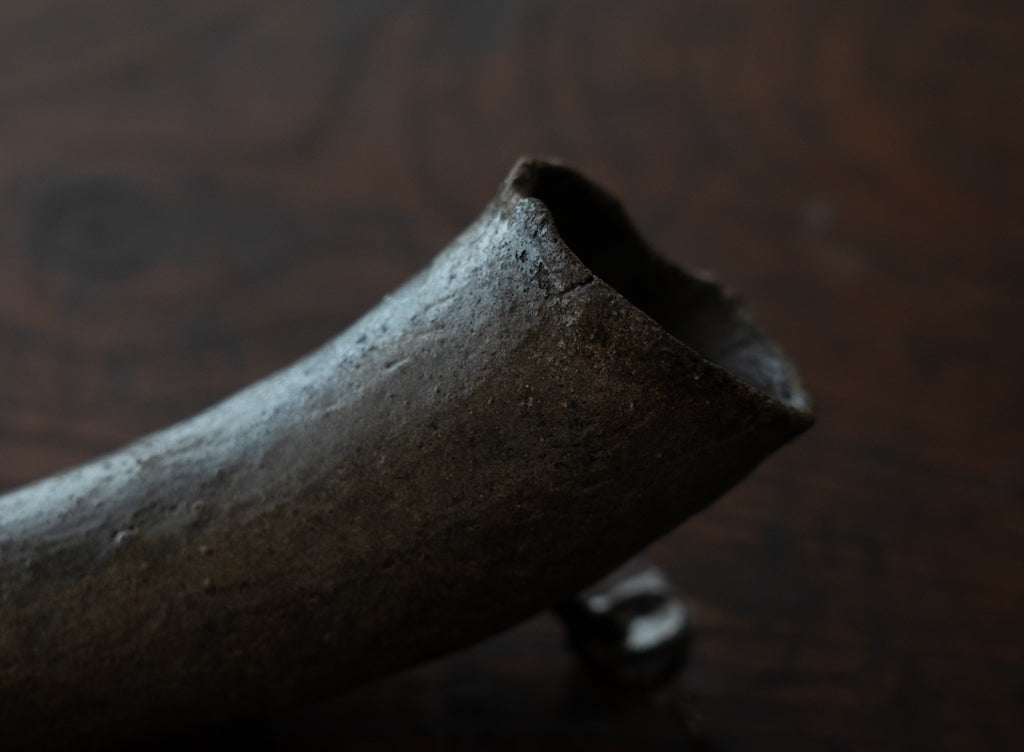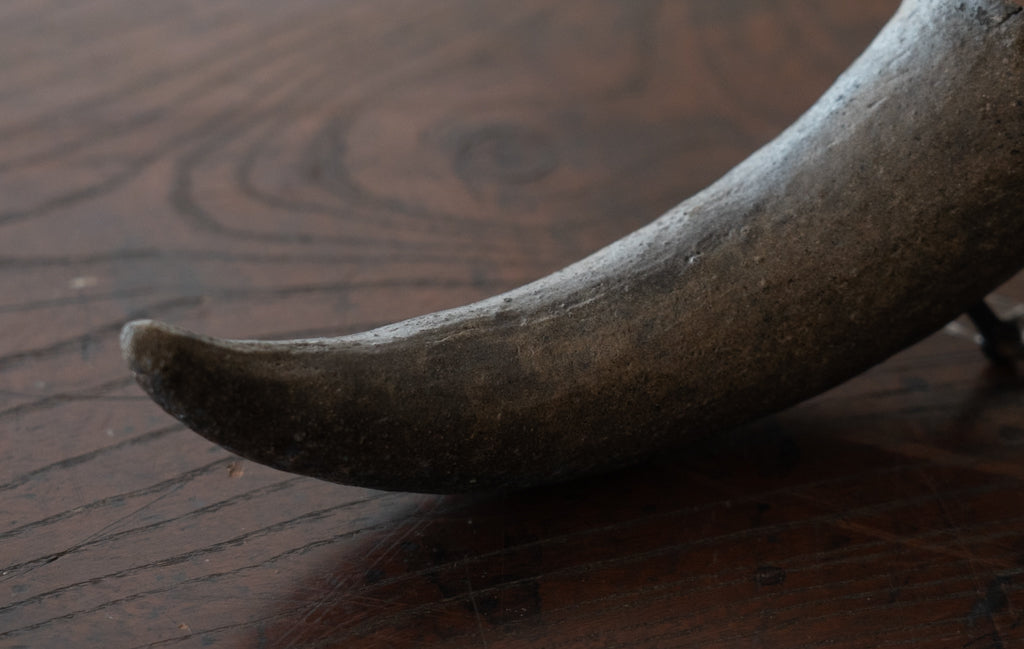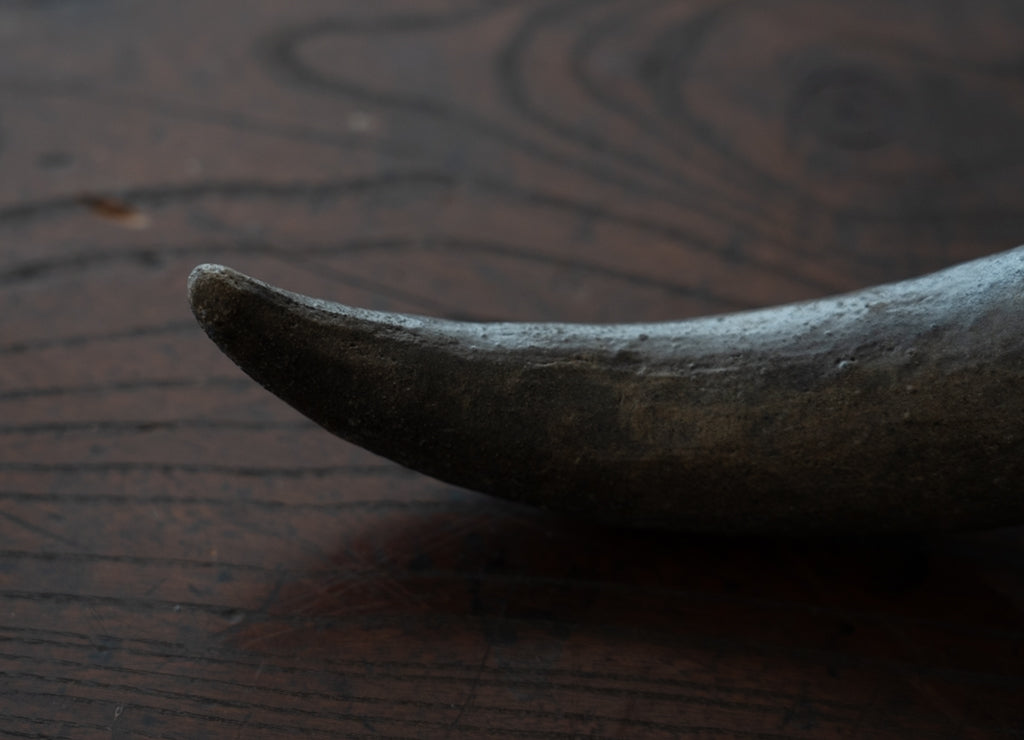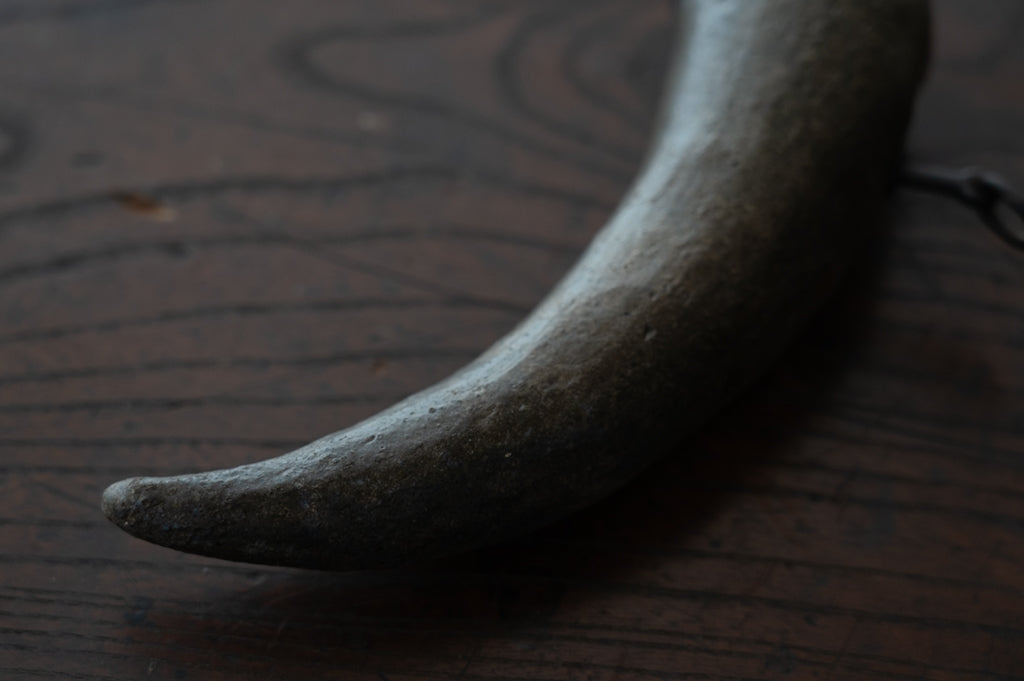Silla Horn Cup Hanging Vase
¥440,000
- Region/Era Silla, Korean Peninsula / Three Kingdoms period 5th to 6th century
- Size H16.4×W3.6×D8.1cm
- Condition Good
- Accessory paulownia box
- No. 43nk-95
One of my recent happy purchases is a hanging flower vase made from a square cup.
Unlike flowers in containers placed on the floor or on a shelf, flowers displayed on a wall have a striking presence. This vase is especially suitable for showcasing the elegance of drooping flowers, such as creeping plants.

There are several types of vases used as hanging flower vases, such as bamboo vases, baskets, and small vases like stone vases. Among these, there are very few similar items, such as leather bags found in ancient pottery such as Sue ware and ceramic earthenware, and horn cups like this one.
In the ancient world, they were only used in special situations such as ceremonies, but even today they are not easily found and are coveted by many enthusiasts.

Including rhytons, which are also modeled after animal horns, horn cups can be found all over the world, from Western Asia to Japan. One country that placed particular importance on horn cups was Silla on the Korean Peninsula.
I will leave the detailed discussion of Silla horn cups to the related blog , but various historical documents suggest that the Silla people had a special faith in cow horns, and they created horn cups with a wide variety of shapes.

This piece is an extremely simple horn cup that is faithfully modeled after a real cow horn. It looks just like the real thing in terms of thickness, size, and curve. It has no unnecessary decorations, which makes it very cool.
Because it is ancient pottery, most similar pieces seen in museums are heavily damaged. However, this piece is in extremely good condition. Not only is it undamaged, but it also has a dull, glossy texture and beautiful, deep black color, making it an outstanding piece from an aesthetic point of view.
It is precisely because it is a miraculous relic that it has been made into a hanging vase and passed down to the present day.

Finally, what I personally find most appealing about this work?
These are the traces of spatula scraping that remain around the tip. Looking closely, you can see the traces of the surface being scraped away with delicate adjustments made to recreate the natural curves and sharpness. This attention to detail makes it impossible not to sense the special feelings the Silla people had for their horn cups...

It doesn't have the capacity to hold a lot of flowers.
One flower.
This flower vase can create a wonderful atmosphere.
▶︎Related blog: "The Silla people's beliefs hidden in the Silla Horn Cup"
[Responsible for: Mao Otsuka]
To pick up and see the actual item in the gallery.
Reservation